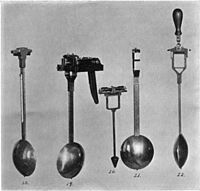
Photo from wikipedia
Abstract Gravity-controlled rocking braced frames (G-CBRFs) are cost-effective low-damage self-centring lateral force resisting systems that allow the reduction of the seismic force demands in structures subjected to earthquakes, while relying… Click to show full abstract
Abstract Gravity-controlled rocking braced frames (G-CBRFs) are cost-effective low-damage self-centring lateral force resisting systems that allow the reduction of the seismic force demands in structures subjected to earthquakes, while relying only on the gravity loads they carry to ensure self-centring. Due to column uplift, significant masses are mobilized, thus activating vertical fundamental modes of vibration that affect the overall seismic behaviour of the structures. This article presents an examination of the seismic response of G-CBRF structures, including the response of the roof and floor framing systems. Twenty-two buildings were designed for this study, with various combinations of building heights (2-, 4-, and 8-storeys), building locations (eastern and western Canada), site classes (soil C and E), and location of the braced frame within the building (interior or exterior column lines). For each design, two framing configurations were studied, with secondary beams parallel or perpendicular to the braced frames. Non-linear response history analyses were performed using representative ground motions selected and scaled according to the National Building Code of Canada requirements. Effects of the vertical component of the ground motions and energy dissipated through friction in beam-to-column connections were also of focus. Incremental dynamic analyses were performed to generate fragility curves for collapse due to overturning of the studied structures. The results show that peak drifts can be accurately predicted. Peak axial loads in frame members are increased due to the vertical inertia forces induced upon rocking. The fragility curves show that acceptable margins against collapse by overturning is achieved for G-CRBFs.
Journal Title: Journal of Constructional Steel Research
Year Published: 2021
Link to full text (if available)
Share on Social Media: Sign Up to like & get
recommendations!